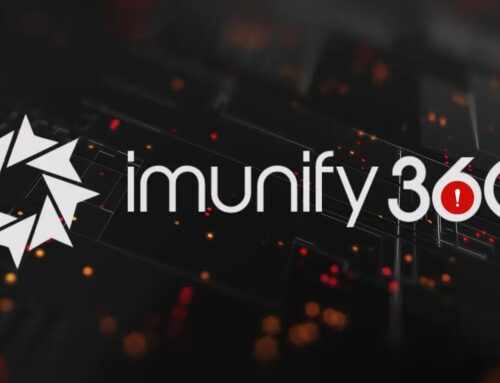
New ClickFix Attack Targeting Windows and macOS Users to Deploy Infostealer Malware
In the constant struggle to protect digital assets, new attack vectors emerge with alarming frequency. One such vector, dubbed ClickFix, has proven particularly effective in evading established security measures and deploying sophisticated information-stealing malware on both Windows and macOS systems. This social engineering technique cleverly exploits user trust and muscle memory, turning routine command-line interactions into a pathway for compromise.
Understanding the ClickFix Attack Vector
The ClickFix attack leverages a potent combination of social engineering and system-level execution. Unlike traditional phishing attempts that rely on malicious attachments or links, ClickFix manipulates users into directly executing malicious commands in their operating system’s command-line interface (CLI) – be it Command Prompt, PowerShell, or Terminal. The success of this method stems from its ability to bypass email security gateways and endpoint detection systems that are often trained to flag executable files or suspicious URLs.
Attackers craft convincing narratives to persuade victims to copy and paste specific commands. These narratives can vary widely, from urgent software updates to troubleshooting guides or instructions for accessing specific resources. Once the victim pastes and executes the command, the malicious payload often disguised as a legitimate utility, silently installs infostealer malware.
The Efficacy of Command-Line Exploitation
The strategic use of the command line for malware deployment is a significant factor in ClickFix’s effectiveness. The CLI inherently assumes a level of user intent and permission. When a user explicitly inputs and executes a command, security systems often interpret this as a legitimate action, making detection challenging. Furthermore, many infostealers are designed to operate stealthily, exfiltrating sensitive data such as login credentials, financial information, and personal files without immediate user notification.
The dual targeting of both Windows and macOS users highlights the broad applicability of this technique. While the specific commands and payloads may differ between operating systems, the core social engineering principle remains consistent. This cross-platform threat underscores the need for vigilance across diverse IT environments.
Infostealer Malware: The Primary Payload
The ultimate goal of most ClickFix campaigns is the deployment of information-stealing malware. These sophisticated threats are designed to covertly collect and transmit sensitive data from compromised systems to attacker-controlled servers. The data exfiltrated can include:
- Browser cookies and stored credentials
- Financial account details
- Personal identifiable information (PII)
- Cryptocurrency wallet data
- Documents and intellectual property
The stolen information is then typically sold on dark web marketplaces, used for identity theft, or leveraged in further targeted attacks, such as business email compromise (BEC) schemes.
Remediation Actions for ClickFix Attacks
Mitigating the risk of ClickFix and similar social engineering attacks requires a multi-layered approach focusing on user education and robust security controls.
- User Education and Training: Conduct regular cybersecurity awareness training to educate users about the dangers of unsolicited commands, unrecognized sources, and the importance of verifying instructions before execution. Emphasize the “stop, look, and think” principle.
- Principle of Least Privilege: Implement and enforce the principle of least privilege. Users should only have access to the resources and permissions necessary to perform their job functions. This limits the potential damage if an account is compromised.
- Endpoint Detection and Response (EDR): Deploy and properly configure EDR solutions to monitor endpoint activity for suspicious processes, command executions, and unauthorized data egress. EDR tools can often detect the post-exploitation behaviors of infostealers.
- Application Whitelisting: Consider implementing application whitelisting policies to prevent unauthorized applications, including malicious scripts or downloaded executables, from running on endpoints.
- JIT (Just-in-Time) Access Management: For privileged accounts or actions, employ JIT access solutions to grant temporary, time-limited elevated permissions, reducing the window of opportunity for attackers to exploit elevated privileges.
- Regular Software Updates: Ensure all operating systems, applications, and security software are kept up-to-date with the latest patches to address known vulnerabilities that attackers might attempt to exploit in conjunction with social engineering.
- Backup and Recovery: Maintain robust backup and recovery procedures for critical data. In the event of a successful infostealer attack, the ability to restore clean data is crucial.
Tools for Detection and Mitigation
Several tools can aid in detecting and mitigating the threats associated with infostealers and command-line-based attacks. While no single tool is a silver bullet, a combination provides comprehensive protection:
| Tool Name | Purpose | Link |
|---|---|---|
| Microsoft Defender for Endpoint | Advanced EDR and threat intelligence for Windows environments. | Microsoft Security |
| CrowdStrike Falcon Insight XDR | Cloud-native EDR and XDR platform offering broad endpoint protection. | CrowdStrike |
| SentinelOne Singularity Platform | AI-powered endpoint security, EDR, and XDR capabilities. | SentinelOne |
| ThreatLocker | Application whitelisting, ringfencing, and storage control. | ThreatLocker |
| Carbon Black Cloud Endpoint Standard | Prevents attacks and provides real-time visibility into endpoint activity. | VMware Carbon Black |
Conclusion
The emergence of the ClickFix attack underscores that human factors remain a primary vulnerability in cybersecurity. By artfully combining social engineering with the direct execution of commands, attackers have found a highly effective pathway to deploy potent infostealer malware. Robust cybersecurity defenses must evolve beyond purely technical safeguards to include continuous user education, adherence to the principle of least privilege, and advanced endpoint monitoring. Staying informed about such evolving threats is critical for practitioners safeguarding organizational assets against sophisticated adversaries.





